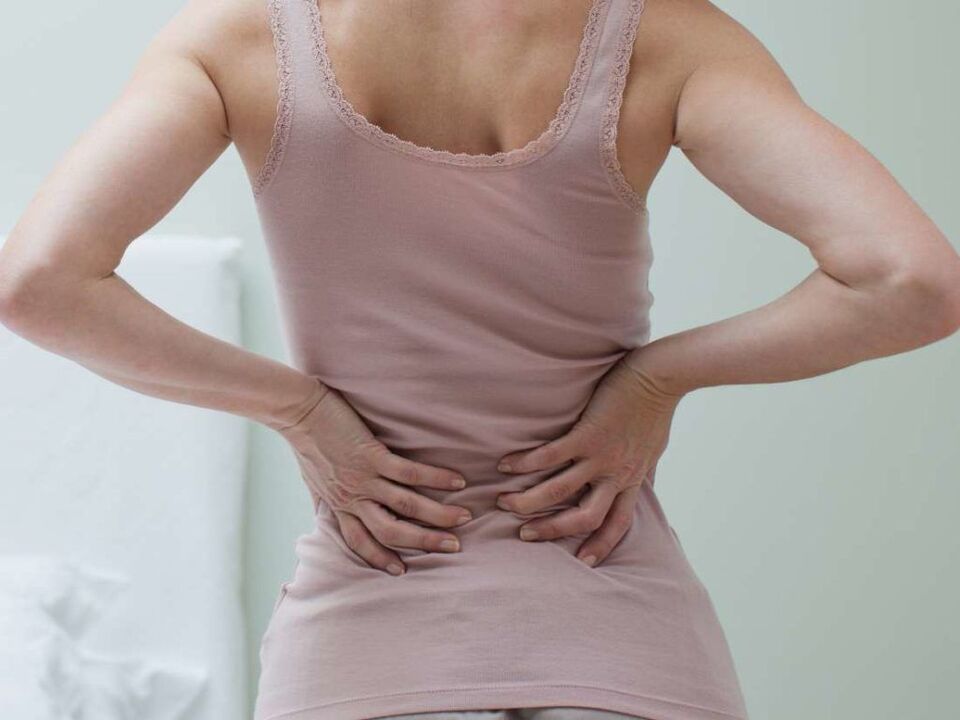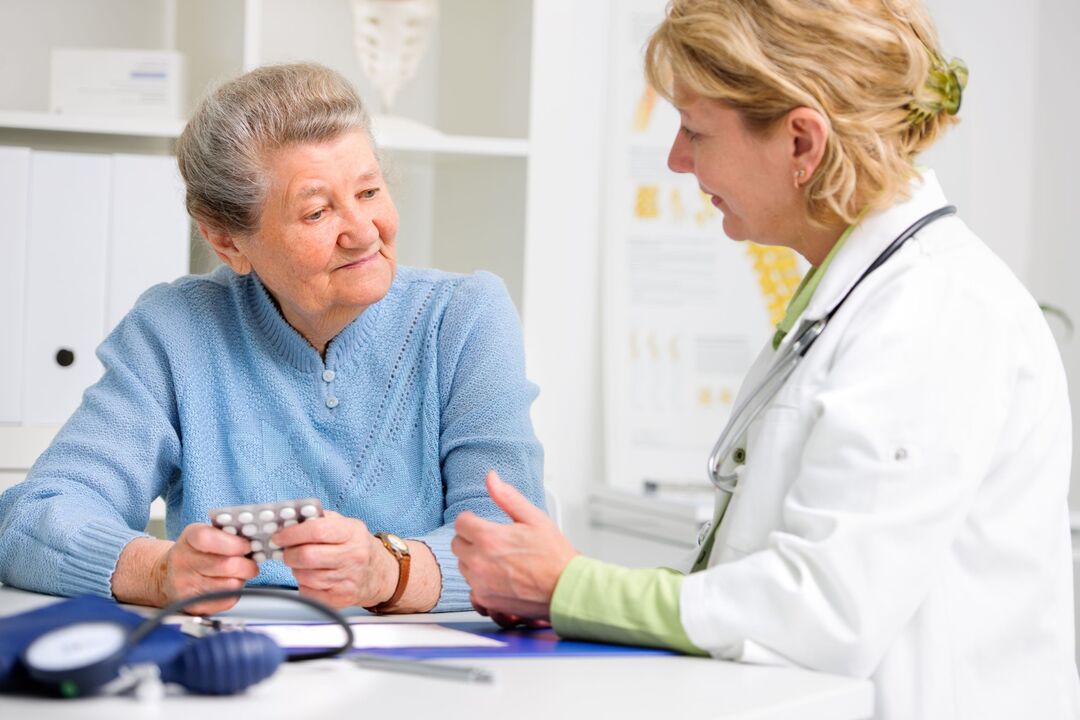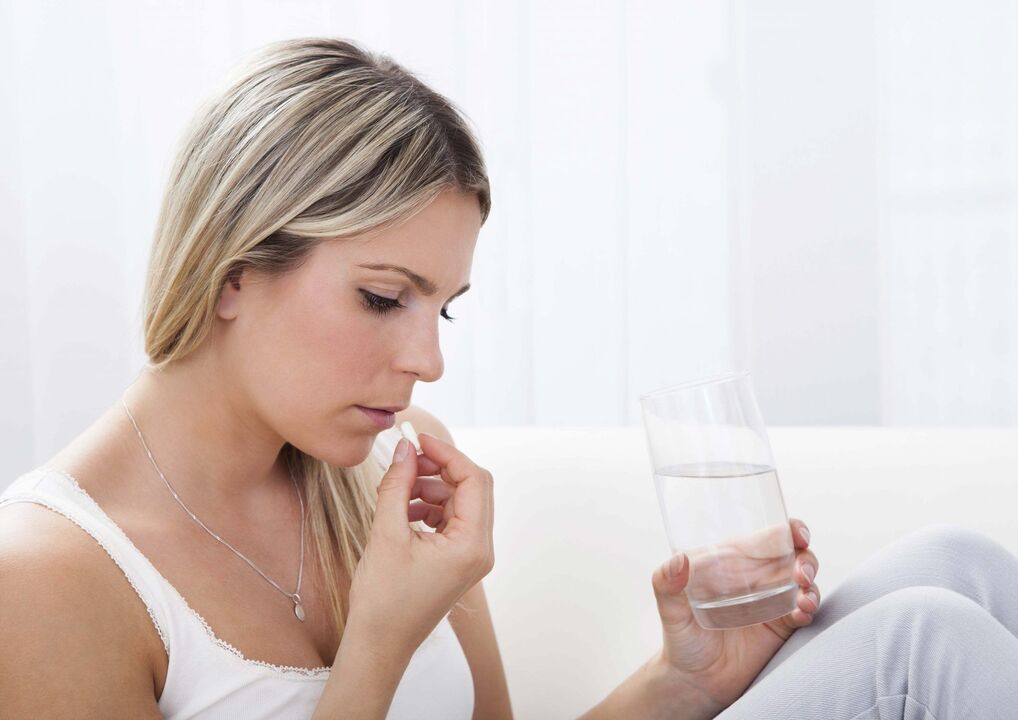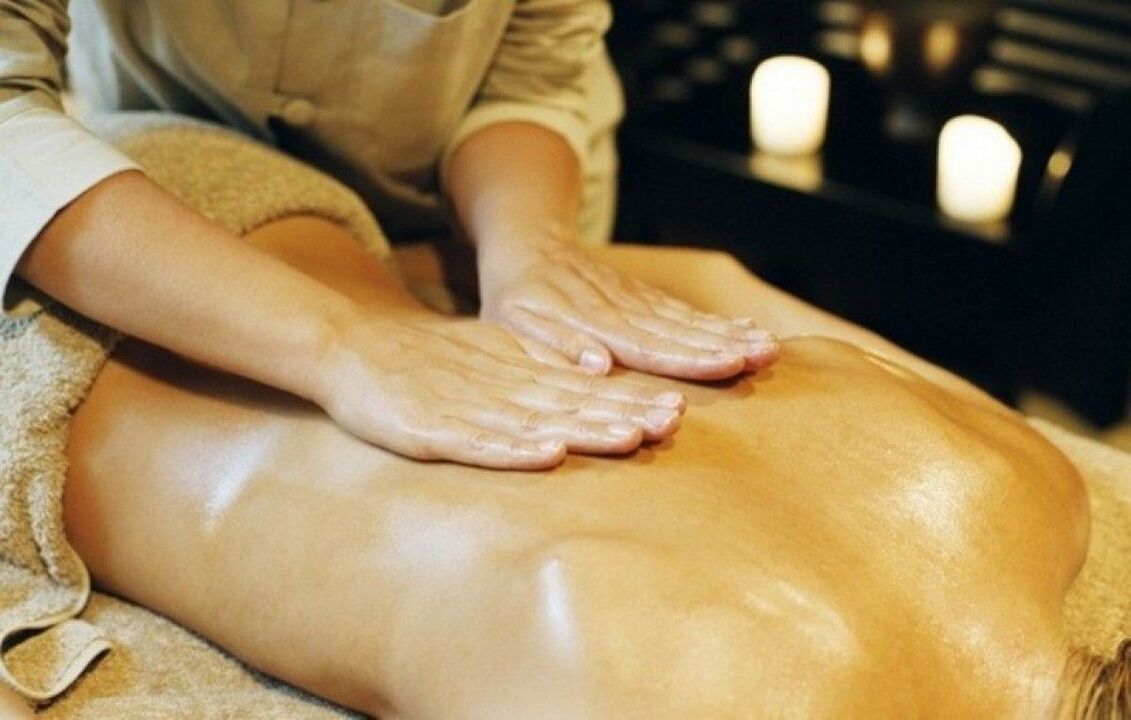Hello dear readers. Diseases of the spinal column are one of the most urgent medical problems of today's humanity. More and more young people are complaining about pain in different parts of the spine, although not so long ago this pathology worried mainly the older generations. That is why the effective treatment of osteochondrosis is so actively discussed everywhere. How to get rid of back pain is the topic of this article. Due to the action of gravity, as a penalty for upright walking, as well as due to other factors, the structures of the spinal column wear out prematurely.
What is osteochondrosis
Insufficient nutrition of the cartilage tissue leads to weakening of the cartilage. The intervertebral layers lose their ability to withstand excess loads. The vertebrae are pressed against each other, literally crushing the intervertebral cartilage cushions. This is how osteochondrosis develops.
Initially, the cartilage tissue suffers, and later the vertebrae themselves are involved in the pathological process. The disease is chronic and accompanied by severe pain.
Depending on the location of lesions in the spine region, several types of disease are distinguished:
Cervical osteochondrosis
It is characterized by pain in the neck, shoulders, arms, head, dizziness, mild visual abnormalities and noise effects.
Thoracic osteochondrosis
Back pain is reflected in the chest, sometimes strikingly similar to heart pain.
Lumbar osteochondrosis
The pain is concentrated in the pelvis, peritoneum, lower back and radiates to the lower extremities.
Simultaneous damage to different vertebrae can occur.

As the disease progresses, there are 4 main stages of the disease. An unpleasant feature of the pathology is the low probability of its detection in the beginning. This is due to the asymptomatic nature of the initial stage of the development of osteochondrosis.
Chondrotic changes will be noticeable only on an X-ray, that is, they can only be discovered by chance. Since there are no prerequisites for intentionally undergoing an X-ray examination.
Stages of chondrotic changes in the spine
- Cartilage dystrophy, initial tissue degeneration.
- Individual foci of cartilage inflammation and microcracks are noticeable. There is discomfort and stiffness in the movements of the spine. Sometimes the cartilage is pushed outward, forming protrusions - protrusions.
- Cartilage is replaced by bone formations. The mobility of the affected area is increasingly limited. Nerve roots and blood vessels are compressed, which causes the development of chronic pain in the back and surrounding areas. Displacements and hernias may occur.
- The disease affects the bone tissue, the cartilage is almost completely destroyed. The inflammation is extensive, complications appear. Certain areas of the spinal column completely lose mobility.
Causes of osteochondrosis
The causes of pathological changes in the cartilaginous structures of the spine have not yet been fully studied by medicine. However, scientists have identified several risk groups that are most likely to develop osteochondrosis.
These are people who lead a passive life, whose work involves a sedentary position. Patients with excess body weight and metabolic disorders are also at risk of the disease.

The health of the spine in hard workers and professional athletes is also at risk.
Factors that cause pathological changes include:
- prolonged lack of fluid in the body;
- improper diet that causes mineral deficiency;
- hormonal changes;
- emotional outbursts, stress;
- injuries, overload;
- staying in static positions that are not anatomically correct;
- foci of infectious lesions in the body;
- flat feet of any weight;
- congenital predisposition;
- muscle weakness;
- pregnancy;
- aging of the body, natural wear and tear of tissues;
- harmful addictions;
- taking drugs, intoxication of various etiologies;
- overweight, obesity;
- sleeping on a too soft mattress and high pillow.
Treatment methods
Therapy consists of an active phase and a rehabilitation process. Even if there are no lasting results for a long time, you cannot give up. Recovery is very slow.
All this requires patience, a strong will and a high level of self-discipline. Success is guaranteed only if there is an insatiable desire for recovery and a series of therapeutic and preventive measures.
It is highly undesirable to limit yourself to self-medication. You must clearly understand that just taking painkillers without changing your lifestyle will not give any results other than temporary relief.
The disease will continue to develop actively. In addition, addiction to anesthetics and analgesics is formed.
Combined therapy provides not only pain relief, but also the fight against degenerative changes, restoration of mobility, relief of inflammation, prevention of complications and attempts to regenerate damaged structures.
Therefore, they connect:
- medicines and, if necessary, surgical intervention;
- therapeutic and preventive gymnastics;
- physical procedures;
- various types of manual therapy, including traditional massage, reflexology;
- removal of clamps, spinal traction.
All this is prescribed and monitored by a doctor. The patient can use unconventional methods, but in agreement with the doctor. The patient must also report any successes and occurrences of adverse reactions. This will allow timely adjustment of the treatment regimen.
How to treat osteochondrosis at home
In a familiar home environment, effective treatment of osteochondrosis is quite possible. Your doctor will tell you how to get rid of back pain not only with the help of anesthesia. The patient will have to follow his instructions and, perhaps, slightly modify the standard approach to the treatment of the spine.
First of all, we are talking about load regulation when performing a set of exercises and when stretching the vertebrae. In this case, you need to focus on personal endurance and sensitivity.
Medicines - medicines for osteochondrosis
It should be emphasized right away that osteochondrosis cannot be overcome with medication alone. But they are an important and even necessary part of the healing process. As a rule, pharmacological drugs are used during the exacerbation of the disease to relieve symptoms and relieve inflammation. As for the regeneration of cartilage tissue, nutritional supplements are used here, although with varying success.
Medicinal effects are aimed at:
- pain relief in different parts of the body;
- containment of inflammation and cessation of this pathological process;
- increased blood circulation;
- improving metabolism;
- increased nutrition of damaged tissues;
- restoring mobility to the spine;
- restoration of cartilage layers;
- preventing the development of depression due to ill health.
Different groups of drugs are used to solve the problem. If the effectiveness of one of them is low, more effective drugs are used with caution, because they have a greater number of possible side effects.

- Anti-inflammatory drugs (NSAIDs). A group of nonsteroidal multifunctional drugs. Relieves inflammation, relieves pain, lowers temperature. In osteochondrosis, creams, ointments and painkillers are most often used.
- Spasmolytics, combined analgesics, local anesthetics. It helps to get rid of muscle pain and headaches.
- Medicines that dilate blood vessels. It helps to get rid of headache and numbness.
- Muscle relaxants. They relieve tightness and spasms, which allows you to eliminate the resulting pain and muscle swelling.
- Vitamin preparations (vit. B, A, E, C, multivitamins), mineral supplements. They supply the body with compounds necessary for cartilage tissue.
- Sedative drugs: tincture of valerian, lemon balm. Help relieve stress from constant pain and normalize sleep.
- Hormonal drugs based on substances methylprednisolone, hydrocortisone. They are strong anti-inflammatory drugs.
- Chondroprotective agents. Restore cartilage.
Physical exercises
Spinal injuries have their limitations when performing special exercises. Therefore, it is recommended to teach under the supervision of an instructor.
Therapeutic exercise will help you get rid of pain, restore the mobility of the spine and release pinched nerves and blood vessels. The exercises are aimed at developing the affected areas, strengthening and stretching the muscles.
The set of gymnastic techniques is more or less standard. But the duration, intensity and number of repetitions are determined individually.
With osteochondrosis, there is a high probability of injury, so all actions are performed with caution. If discomfort or pain appears, gymnastics should be stopped until the feeling disappears. After the action resumes.
You may need to reduce the load or replace this exercise with a similar but more suitable one.
Treatment of osteochondrosis with folk remedies
Traditional medicine has in its arsenal many simple, effective and safe recipes against osteochondrosis. They are used in the form of teas, tinctures, lotions, poultices, rubs, applications, ointments.
The herbal medicine will help the body to support, strengthen it, normalize its functioning and relieve unpleasant symptoms. These medicines can be bought at any pharmacy or herbalist at an affordable price.
Effective linings
The use of compresses will help to get rid of painful attacks, swelling and inflammation of cartilage tissue. For this purpose, irritating and heating agents are used.
- Horseradish with apples. Horseradish root and a small apple are grated on a fine grater. The puree is mixed in equal parts and applied to the affected area. Cover the upper part with a film and apply a warm bandage overnight. Treatment is continued until the pain disappears.
- For the same purpose, you can use dressings made of other products: grated radish, onion pulp, burdock leaves, cabbage. To enhance the anti-inflammatory effect, you can add honey.
- Vodka, mustard powder, camphor alcohol - 50 g each, mix with three beaten egg whites. The mixture is infused for about 10 hours and used as a poultice for 3 days in a row, morning and evening. Then move on to the next recipe.
- 50 g of aloe leaf extract is mixed with 150 g of vodka and 100 g of honey. Compresses are also used twice a day for three days. Then go back to the previous recipe. These two drugs are used alternately, each for 3 days, without breaks, until the symptoms disappear.
Infusions and decoctions for osteochondrosis
This group of folk remedies is used for systemic effects on the body in order to provide anti-inflammatory, analgesic, strengthening and soothing effects.
Pine cones
Decoction: wash 4 unripe cones, chop them, add half a liter of water, cook for a few minutes. Drink ¼ tbsp. 1-3 times a day.
Tincture: pour a glass of alcohol (strong vodka) over 5 crushed ripe cones with seeds, leave for 2 weeks, shake the container daily. Drink a teaspoon after meals.
Birch buds and cranberry leaves
1 teaspoon of each, boil a glass of boiling water. Drink a little at a time throughout the day.
Herbs
Teas made from plants such as horsetail, mint, St. John's wort, lemon balm, calendula, linden, thistle, chamomile, plantain, thyme, cinquefoil, sage, immortelle are also useful. They are used in various combinations or separately.
Applications for honey
With osteochondrosis, applications and lotions of aloe juice and honey help. They are used individually or in a mixture.

A piece of gauze should be moistened in the product and applied to the painful area under the heating bandage for at least 40 minutes. You can also simply apply them to the desired areas several times a day.
Rubbing
Rubbing the medicinal composition accelerates the blood, ensures deep penetration of the product into the body, warms it, stimulates active centers, removes tension and removes numbness.
Suitable for rubbing in osteochondrosis:
- bear/badger fat;
- turpentine;
- alcoholic herbal tinctures;
- decoctions and infusions of medicinal herbs;
- fir oil;
- special compounds.
Rubbing for severe pain: crush a package of analgin (10 pcs. ), mix with a glass of alcohol, a small bottle of iodine, 10 ml of camphor alcohol. Rub your back only on painful areas. May cause burning sensation.
Therapeutic baths for osteochondrosis
Similar procedures are carried out in the phase of remission. Hot water is used with the addition of herbal decoctions and essential oils. It should be used before going to bed.
Baths help to relax, calm down, relieve swelling and tension, remove numbness, pain, heaviness in muscles. Here, decoctions are used in higher concentrations than when taken orally. But the same plants will do.



















